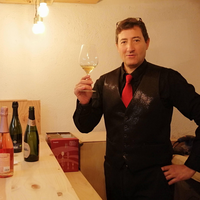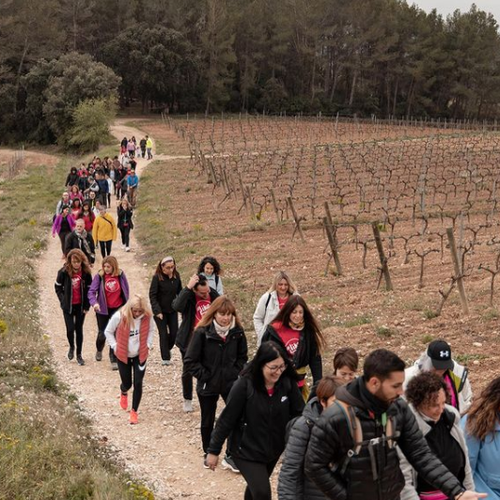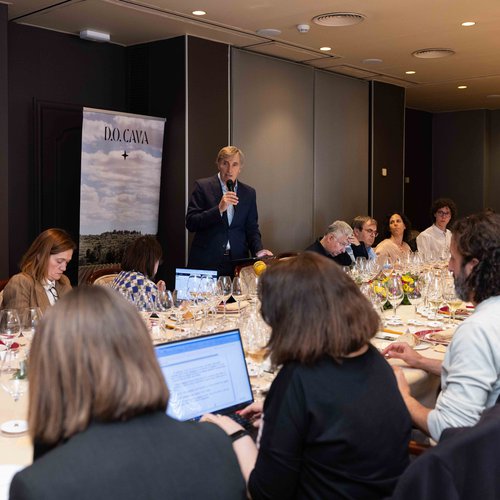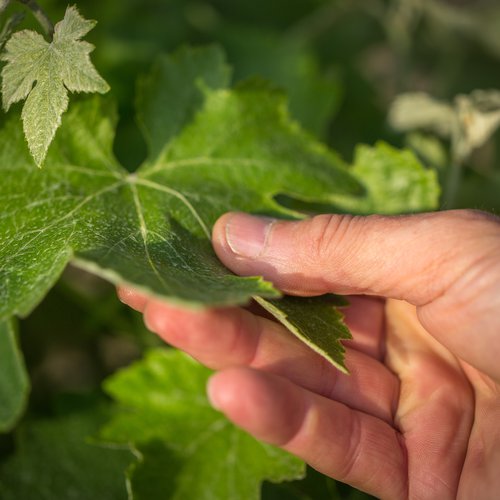Cava aging - The Cava production process
What is the function of aging in Cava?
The production process that marks out Cava follows the traditional method, which is based on carrying out a second fermentation in the bottle, using a base wine to which sugar and yeast have been added.
Following the traditional or “champenoise” method, the first thing that happens inside the bottle during the aging period of Cava is fermentation (the yeast transforms the sugar into alcohol and CO2). This stage usually lasts between one and three months, depending on the temperature and the type of yeast used. Once this second fermentation is finished, we still do not have a Cava, as we have to wait at least nine months to obtain the first category: Cava de Guarda. During this time, the base wine is transformed into a sparkling wine: the bubbles generated during the second fermentation are integrated into the liquid.
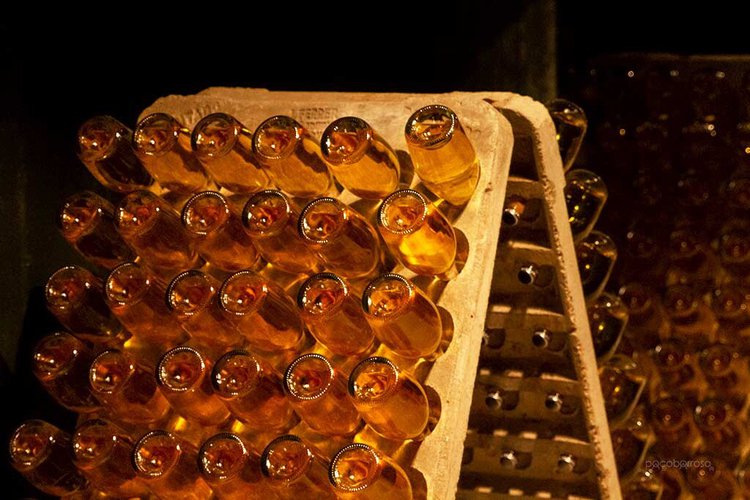
The sediments of dead yeast that die during autolysis (alcoholic fermentation) and are left in the bottle are known as lees - mares (mothers) in Catalan. These sediments are responsible for the creation of new flavours and aromas, and the longer the Cava is stored “on the lees”, the more complex the wine will be, and the smaller and more integrated the bubbles will be. These months are key for the Cava to attain its quality and personality.
According to François Chartier, the renowned expert in flavours and in understanding the molecular mechanisms that regulate gastronomic pleasure, “Aging on the lees, and the low pH of long-aged Cavas, result in the environment required for the Maillard reaction”. In long-aged Cavas, this provides complex, toasty aromas.
In order for these yeasts to transform the base wine into Cava, they must have very specific characteristics. In principle, residual sugars cannot be generated. In addition, the yeast must have a low production of hydrogen sulphide, to avoid its unpleasant aroma, and the production of acetic acid should also be as limited as possible. The yeast should always be the same, and must be able to withstand fermentation temperatures of between 14º and 16º, as the aromatic substances, generally terpenes, are very volatile and tend to be lost at high temperatures.
It is important that the yeast has a flocculation capacity (ability of yeast to clump together as flocs) and settles easily in the neck of the bottle during the stirring process. At the same time, glycerol must be formed, which gives unctuousness to the wine and can produce esters (organic compounds created by the reaction between acids and alcohols, which cause fruity aromas). In addition, higher alcohols and other volatile substances are vital in the production of the secondary aromas that contribute positively to the sensory characteristics of Cava.
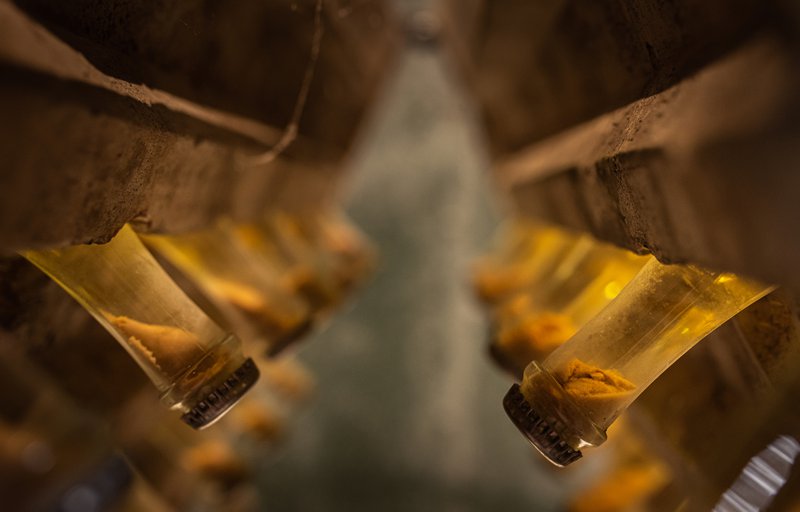
The effect on the aromatic profile of the yeast in Cava begins with the primary aromas of the grapes, which still remain in the wine, reflecting one of the distinguishing features of this product: its many varieties. Thanks to the formation of glycerol during the early stages of fermentation, the Cavas gain unctuousness and a certain sweetness.
Furthermore, when the foaming process is slow, away from light sources, constant humidity and low temperatures, the carbon dioxide is generated slowly, and the bubbles are smaller and better integrated.
Types of Cava according to aging time
Cava de Guarda
After a minimum aging period of nine months (from tirage to disgorgement), Cava de Guarda is characterised by a bright straw colour, in some cases with greenish highlights, and fruit (apple, pear, lemon, raspberry, peach) and floral aromas. These Cavas are fresh and clean, with a touch of yeast in the more aromatic part. The bubbles are still very present, as they have not yet fully integrated into the wine.
Cava de Guarda Superior
After 18 months, this Cava can present different tones of yellow (or pink, if you opt for a rosé), bright, intense and with structure and aromatic richness. Bubbles are livelier and slightly creamier, and also smaller in size, rising more slowly, as they are in the process of integration. The fruit is riper, and clearer notes of brioche, pastry, bread dough and dried fruits are beginning to be detected.
These Cavas have been in contact with their lees for 30 months. They are more complex Cavas where the aromas of ripe fruit are maintained and notes of candied fruit appear, together with notes of pastries, toasted bread and nuts such as hazelnuts and almonds. Gran Reserva is a Cava of great intensity and flavours, with unctuous, velvety and fine bubbles, as the integration process has finished.
With a minimum of 36 months of aging, these Cavas are distinguished by the complexity of their aromas, with mineral subtleties typical of their place of origin. In addition, almonds, hazelnuts, floral honey, spices and toasted notes such as mocha and toffee can be clearly appreciated. The palate shows a perfect balance in structure, with great creaminess and acidity.
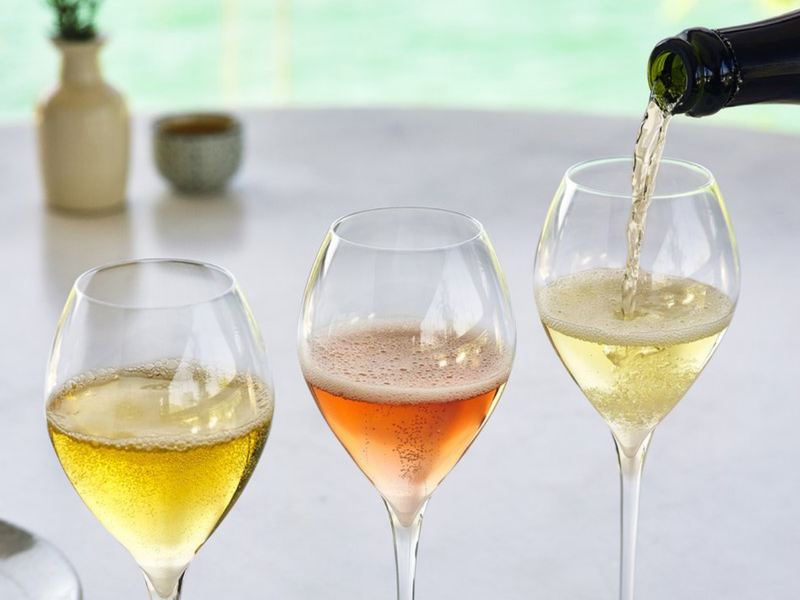
Cava labels according to the aging time
Once we know the different categories of Cava and we have learned about its profiles and possibilities, we must know how to identify it. To do this, the new legislation has renewed the label on the back of the bottle, called marchamo. These rear labels must include the words “Cava”, “Reserva”, “Gran Reserva”, “Paraje Calificado” (with a specific label), “Guarda” and “Guarda Superior”, as well as the origin, or smaller geographical area, if applicable. The quality guarantee code and the volume of the bottle will also be shown. Finally, the D.O. Cava has launched a new "Integral Winemaker" label that easily identifies those wineries that carry out the entire Cava production process, from start to finish, on their own property.

Cava de Guarda
Cava de Guarda bears a greenish mark, on which we will see the minimum aging time (nine months) and the production area. This is the only Cava that does not carry the quality guarantee code.
Cava de Guarda Superior
“Guarda Superior” will appear on all the labels of Cavas aged for more than 18 months, as part of a label with other information.
Reserva
A silver/grey-coloured label showing the minimum aging period (18 months), the production zone (it may also indicate the sub-zone), and the quality guarantee code.
Gran Reserva
A light brown label with a minimum aging time of 30 months, the production zone (it may also indicate a sub-zone), and the quality guarantee code.
Cava de Paraje Calificado
With a greyish-brown label showing the minimum aging time of 36 months, the production zone (it may also indicate a sub-zone), and the quality guarantee code.
